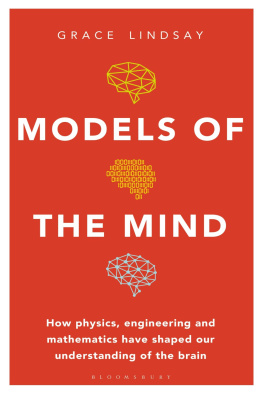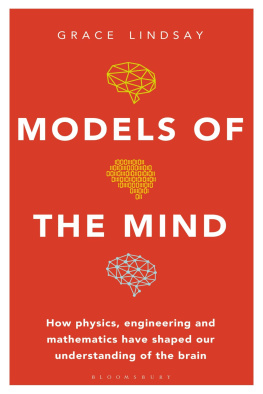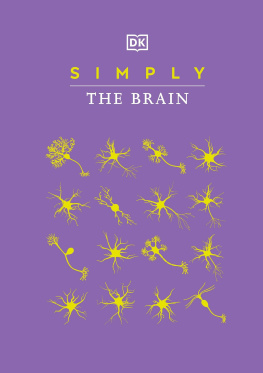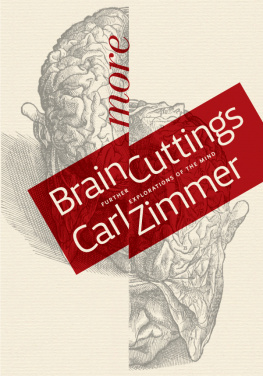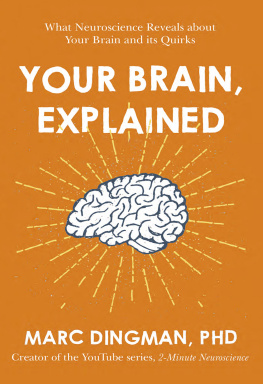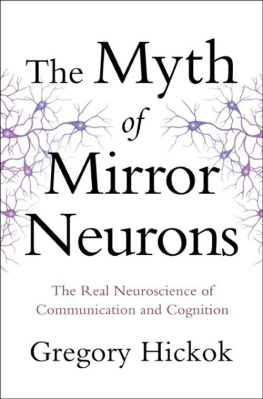Grace Lindsay - Models of the Mind: How Physics, Engineering and Mathematics Have Shaped Our Understanding of the Brain
Here you can read online Grace Lindsay - Models of the Mind: How Physics, Engineering and Mathematics Have Shaped Our Understanding of the Brain full text of the book (entire story) in english for free. Download pdf and epub, get meaning, cover and reviews about this ebook. City: London, year: 2021, publisher: Bloomsbury Sigma, genre: Romance novel. Description of the work, (preface) as well as reviews are available. Best literature library LitArk.com created for fans of good reading and offers a wide selection of genres:
Romance novel
Science fiction
Adventure
Detective
Science
History
Home and family
Prose
Art
Politics
Computer
Non-fiction
Religion
Business
Children
Humor
Choose a favorite category and find really read worthwhile books. Enjoy immersion in the world of imagination, feel the emotions of the characters or learn something new for yourself, make an fascinating discovery.
- Book:Models of the Mind: How Physics, Engineering and Mathematics Have Shaped Our Understanding of the Brain
- Author:
- Publisher:Bloomsbury Sigma
- Genre:
- Year:2021
- City:London
- Rating:4 / 5
- Favourites:Add to favourites
- Your mark:
Models of the Mind: How Physics, Engineering and Mathematics Have Shaped Our Understanding of the Brain: summary, description and annotation
We offer to read an annotation, description, summary or preface (depends on what the author of the book "Models of the Mind: How Physics, Engineering and Mathematics Have Shaped Our Understanding of the Brain" wrote himself). If you haven't found the necessary information about the book — write in the comments, we will try to find it.
Grace Lindsay reveals the value of describing the machinery of neuroscience using the elegant language of mathematics.
The brain is made up of 85 billion neurons, which are connected by over 100 trillion synapses. For over a century, a diverse array of researchers have been trying to find a language that can be used to capture the essence of what these neurons do and how they communicate and how those communications create thoughts, perceptions and actions. The language they were looking for was mathematics, and we would not be able to understand the brain as we do today without it.
In Models of the Mind, author and computational neuroscientist Grace Lindsay explains how mathematical models have allowed scientists to understand and describe many of the brains processes, including decision-making, sensory processing, quantifying memory, and more. She introduces readers to the most important concepts in modern neuroscience, and highlights the tensions that arise when bringing the abstract world of mathematical modelling into contact with the messy details of biology.
Each chapter focuses on mathematical tools that have been applied in a particular area of neuroscience, progressing from the simplest building block of the brain the individual neuron through to circuits of interacting neurons, whole brain areas and even the behaviors that brains command. Throughout Grace will look at the history of the field, starting with experiments done on neurons in frog legs at the turn of the twentieth century and building to the large models of artificial neural networks that form the basis of modern artificial intelligence. She demonstrates the value of describing the machinery of neuroscience using the elegant language of mathematics, and reveals in full the remarkable fruits of this endeavor.
Grace Lindsay: author's other books
Who wrote Models of the Mind: How Physics, Engineering and Mathematics Have Shaped Our Understanding of the Brain? Find out the surname, the name of the author of the book and a list of all author's works by series.

